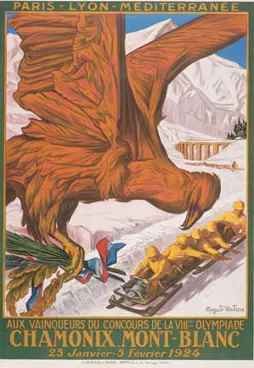The First Winter Olympics
Part 1: Action at the Games The Winter Olympics first took place in 1924, in Chamonix, France. A total of 16 nations sent athletes, totaling 258 (247 men and 11 women). The Games were actually called "The International Winter Sports Week" and went on for 11 days, from January 25 to February 5. The number of events staged that year was 16. The events that year were these:
Clas Thunberg from Finland won three gold medals (and five overall) in speed skating. Thorleif Haug from Norway won three gold medals in cross-country skiing and the nordic combined. His countryman Roald Larsen won five medals in speed skating, two silvers and three bronzes. An even more remarkable story was the hockey tournament. Canada at that time was an extremely dominant team, and it showed. In the first game, they beat Switzerland 33-0. Next, it was Czechoslovakia getting pummeled 30-0. After beating Sweden 22-0, Canada then defeated Great Britain 19-2. The Canadians finally won the gold medal with a 6-1 victory over the United States in the final. It was Canada's only medal of the Games. Next page > How the Games Began > Page 1, 2 |
|
Social Studies for Kids
copyright 2002–2024
David White



 4-man bobsled
4-man bobsled
 The very first event was the 500-meter speed skating, which was won by Charlie Jewtraw, an American. The big winners, though, were Finland and Norway. Between them, they won 28 of the 43 medals awarded. Norway had 17; Finland had 11; the U.S. and Great Britain got 4; Austria, Switzerland, and France received 3; Sweden won 2; and Canada got 1.
The very first event was the 500-meter speed skating, which was won by Charlie Jewtraw, an American. The big winners, though, were Finland and Norway. Between them, they won 28 of the 43 medals awarded. Norway had 17; Finland had 11; the U.S. and Great Britain got 4; Austria, Switzerland, and France received 3; Sweden won 2; and Canada got 1.  One fantastic story involved American Anders Haugen and the ski jump. Haug, the Norwegian, was named third place and received the bronze medal. But recalculations many years later uncovered a scoring error and vaulted Haugen into third place. He finally got the medal in 1974, when he was 83.
One fantastic story involved American Anders Haugen and the ski jump. Haug, the Norwegian, was named third place and received the bronze medal. But recalculations many years later uncovered a scoring error and vaulted Haugen into third place. He finally got the medal in 1974, when he was 83.
